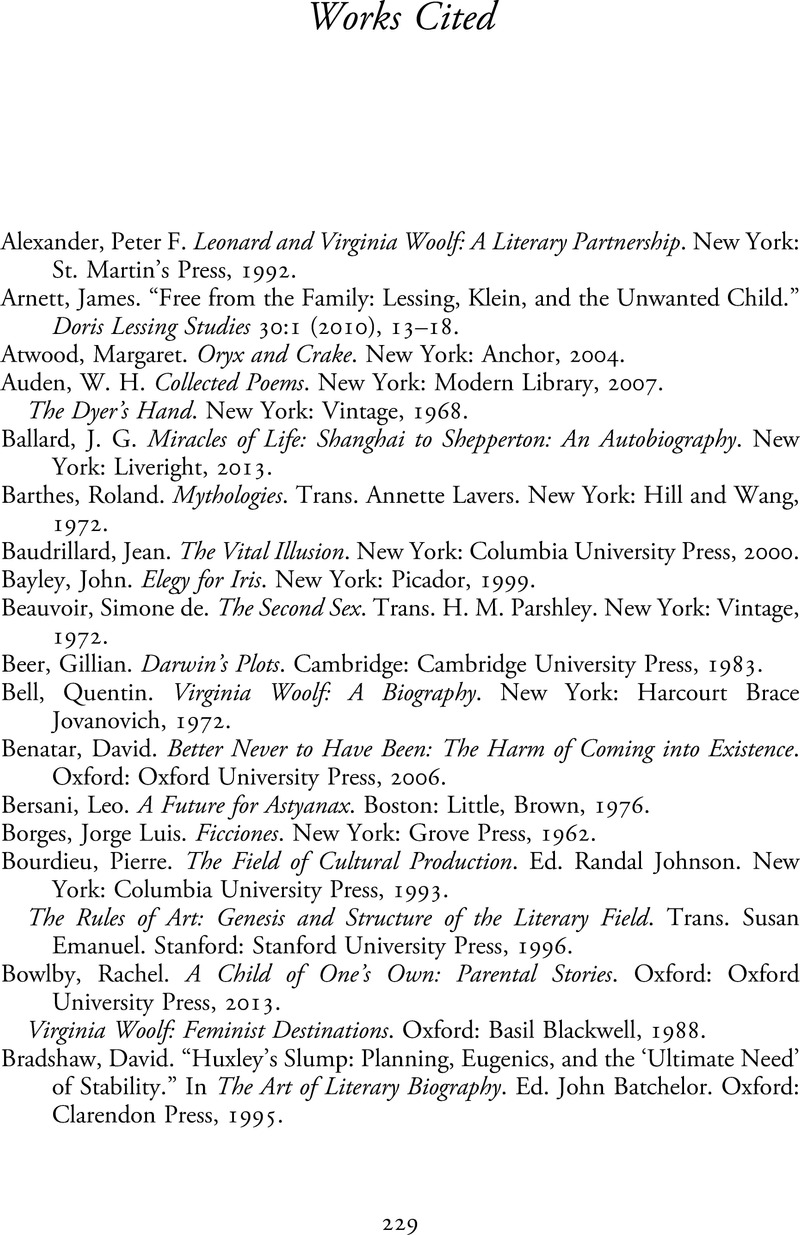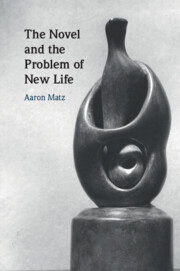Book contents
- The Novel and the Problem of New Life
- The Novel and the Problem of New Life
- Copyright page
- Dedication
- Epigraph
- Contents
- Preface
- Acknowledgments
- Chapter 1 Order and Origin
- Chapter 2 Revenge of the Unborn
- Chapter 3 Hardy and the Vanity of Procreation
- Chapter 4 Lawrence’s Storm of Fecundity
- Chapter 5 The Children of Others in Woolf
- Chapter 6 Reproduction and Dystopia
- Chapter 7 Lessing on Generations and Freedom
- Chapter 8 Procreating on Patmos
- Notes
- Works Cited
- Index
- References
Works Cited
Published online by Cambridge University Press: 24 June 2021
- The Novel and the Problem of New Life
- The Novel and the Problem of New Life
- Copyright page
- Dedication
- Epigraph
- Contents
- Preface
- Acknowledgments
- Chapter 1 Order and Origin
- Chapter 2 Revenge of the Unborn
- Chapter 3 Hardy and the Vanity of Procreation
- Chapter 4 Lawrence’s Storm of Fecundity
- Chapter 5 The Children of Others in Woolf
- Chapter 6 Reproduction and Dystopia
- Chapter 7 Lessing on Generations and Freedom
- Chapter 8 Procreating on Patmos
- Notes
- Works Cited
- Index
- References
Summary

- Type
- Chapter
- Information
- The Novel and the Problem of New Life , pp. 229 - 240Publisher: Cambridge University PressPrint publication year: 2021



